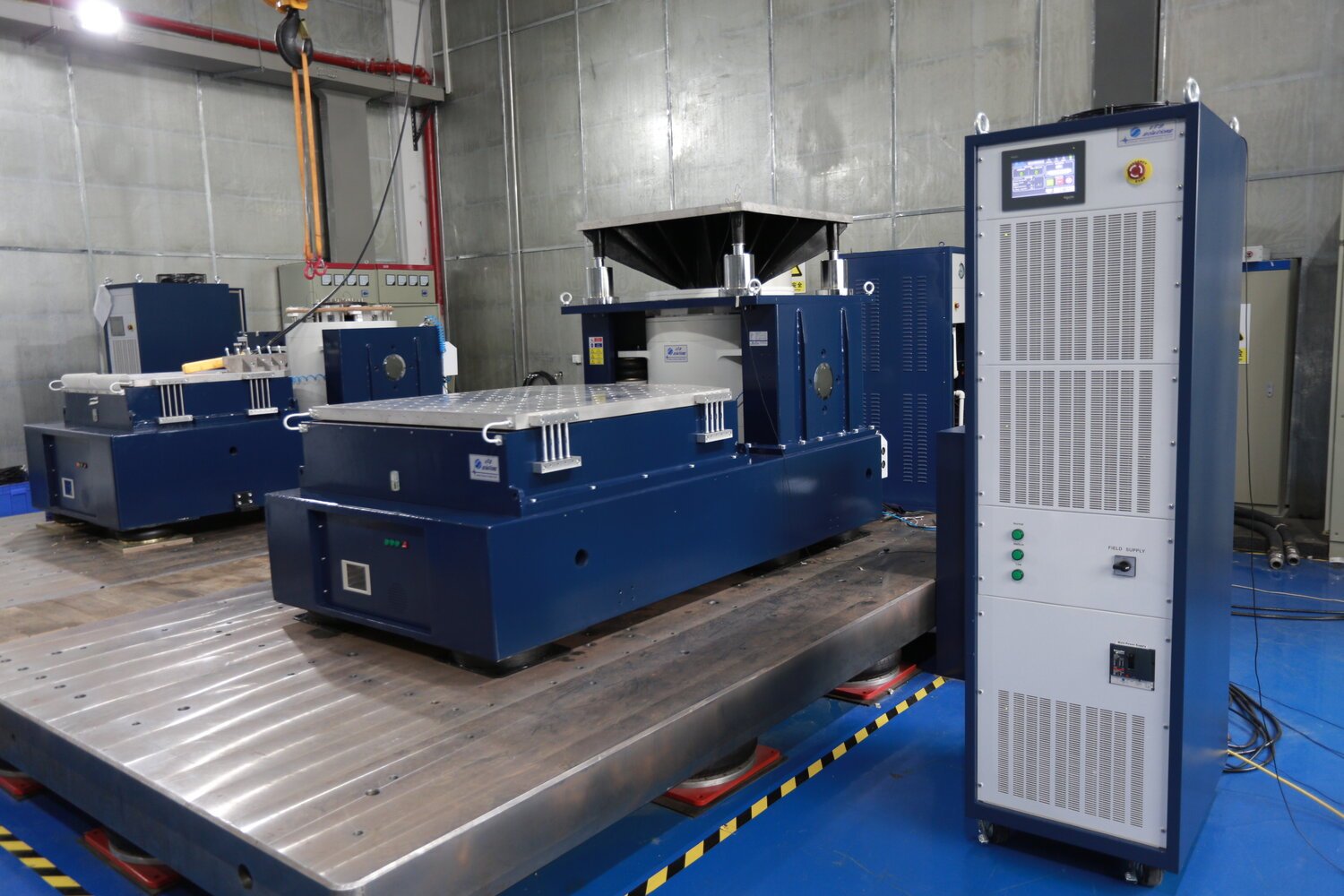Remote diagnostic services reaching new heights with wireless sensors
A motor repair shop is deeply engaged in providing top-tier monitoring solutions and reliability services to its customers. Serving central and western Germany, they cater to a wide range of applications, from chemical industries to facility management, effectively managing diverse critical situations.
ONEPROD FALCON, A Host Of Innovations
FALCON allows making immediate use of the benefits of condition based maintenance: the Accurex™ automatic diagnostic works instantly based on the first measurement. Faults detected are available right in front of the machine such enabling interaction with the user (bearing lubrication, temperature control…) and optimization of the maintenance process. Based on the ISO 10816 standard and on ONEPROD 30+ years of experience, FALCON’s built-in automatic diagnostic module provides unbeatably relevant and reliable results.
Mastering Productivity in 2024: A Guide for Vibration Engineers
Gear up for 2024 as a vibration engineer! Our blog is your go-to guide for staying productive in the evolving landscape. Uncover insights, tips, and solutions to tackle challenges like complex machinery, time constraints, and the integration of AI and IoT. Learn from pioneers, embrace new technologies, and conduct the machinery symphony with confidence. Stay ahead in the dynamic era of Vibration Engineering
Ensuring a Silent Holiday: A Guide to Caring for Your Vibration Shaker
If you're heading off for a well-deserved holiday break, make sure your vibration shaker is not left out in the cold. Our comprehensive guide provides essential tips to safeguard your equipment during your absence, ensuring a seamless return to work. From a detailed inspection to practical steps for storage, we've got you covered. Read more to discover how a little pre-holiday care can go a long way in preserving the longevity and efficiency of your vibration shaker.
The Hidden Costs of Machine Misalignment
Discover the hidden costs of machine misalignment and the importance of predictive maintenance. Learn how to calculate and mitigate these expenses, considering supply chain factors. Dive into our blog for insights on minimizing misalignment costs through proactive strategies.
RCFA: Root Cause Failure Analysis
Root Cause Failure Analysis (RCFA) is a crucial tool for dissecting failures, going beyond symptoms to identify underlying issues. This exploration outlines the key steps of RCFA, emphasizing its significance. Illustrated through the Deepwater Horizon oil spill, RCFA proves transformative, revealing contributing factors and root causes. The case underscores the power of RCFA in prompting corrective actions and fostering a culture of improvement. As organizations embrace RCFA, they fortify against future challenges, ensuring resilience and continuous enhancement.
Crack Simulation Models in Variable Amplitude Loading
Dive into the fascinating world of crack simulation models and their profound impact on engineering and materials science. Uncover real-world applications, including awe-inspiring case studies, while gaining insights into the crucial components driving innovation in various industries. Discover the intricate science and technology behind these models, and how they are reshaping the future of materials in a way that's not just about strength but also intelligence and sustainability.
Fatigue And Durability Of Structural Materials
Eager to dive deeper into the world of structural materials? Discover the untold stories of resilience, the science behind lasting structures, and the strategies to conquer fatigue and durability challenges. Our comprehensive article is your gateway to a world where knowledge is the key to engineering success. Read on to uncover the secrets that shape our modern infrastructure.
Vibration Analysis for Electric Motors
Electric motors are the workhorses of modern industry. Two primary types, DC and AC motors, play crucial roles, with squirrel cage rotor induction motors being the workhorse of choice for their simplicity and reliability. Understanding their components and detecting common failures through vibration analysis is vital for their longevity. The motor's identification plate holds key information. In an automated world, these skills keep industries running smoothly, powered by these silent technological champions.
The Importance of Vibration Analysis Training
This article has explored why vibration analysis training is essential. It prevents equipment failures, enhances operational safety, and extends the lifespan of machinery. Various industries, including manufacturing, energy, aerospace, and transportation, benefit significantly from this training. To get started, one should find a reputable training provider, choose the right course, engage in hands-on practice, and consider obtaining certification. By investing in vibration analysis training, professionals not only save costs but also contribute to the efficiency and sustainability of their organizations.
Can an Accelerometer Measure Distance?
In the world of technology, the accelerometer, a versatile sensor, has emerged as a crucial component in various devices. One common question revolves around its ability to measure distance accurately. While accelerometers excel at measuring acceleration, their role in distance estimation is not straightforward. This article explores the working principles of accelerometers, their limitations, and the methods used to estimate distance, shedding light on their significance in modern technology.
Shock Testing
Shock testing is a critical process used across various industries to evaluate the resilience and reliability of products subjected to dynamic mechanical forces. This comprehensive guide explores the fundamentals of shock testing, emphasizing the significance of classical shock pulses, the types of shock testing machines, and the key steps involved in conducting shock tests on electrodynamic shakers.
Vibration Analysis: Good vs Bad Vibration Data
In the realm of vibration analysis, the crucial distinction between reliable and misleading data holds paramount importance. Delving into the causes and manifestations of erroneous data, alongside strategies for elevating data integrity, is pivotal for future improvements in data quality.
Shock Response Spectrum Analysis Approach for Optimal Design of Electronic Devices
The Shock Response Spectrum (SRS) is a vital tool in the design of electronic devices. It provides engineers with a graphical representation of the device's response to shock loads, helping them optimize its shock resistance. By analyzing the SRS curve, engineers can identify critical frequencies, make informed design decisions, and improve reliability. The SRS analysis ensures cost-effective design, reduces the risk of failure during shocks, and enhances overall device performance.
Understanding the Non-Synchronous Defect Frequencies in Rolling Element Bearings
Rolling element bearings play a vital role in machinery, but non-synchronous defect frequencies can pose challenges. Manufacturing imperfections, misalignment, and operating conditions contribute to these irregular vibrations. To mitigate risks, precision manufacturing, accurate alignment, and condition monitoring are crucial. Understanding and addressing non-synchronous defect frequencies ensure optimal performance and reliability of bearings.
Experimental Characterization and Simulation of Vibration Environmental Test
This article covers the basics of vibration environmental testing, including the different types of vibration simulation methods, test equipment and instrumentation, test procedures, vibration measurement techniques, data acquisition and analysis, and test standards and guidelines. It also discusses the applications of vibration environmental testing in various industries and future trends in the field, such as emerging technologies, integration of test and simulation, and use of artificial intelligence and machine learning. By understanding the fundamentals of vibration environmental testing and staying up-to-date on the latest trends and technologies, manufacturers and engineers can ensure that their products are reliable, durable, and high-performing in a variety of real-world environments.
The Importance of Shock and Vibration Compliance Tests in Product Design
Shock and Vibration Compliance Testing is an essential part of product development for manufacturers across various industries. These tests ensure that products can withstand environmental stressors and meet necessary compliance standards, providing peace of mind to manufacturers and customers alike. At our ISO 17025 accredited laboratory SAC Singlas, our experienced team of engineers uses the latest testing equipment to conduct these tests efficiently and effectively. By partnering with us for your testing needs, you can ensure that your products meet compliance standards, are reliable, safe, and meet customer expectations.
Shock Response Spectrum (SRS)
The Shock Response Spectrum was first conceived by Dr. Maurice Biot and is described in his Ph.D. thesis published in 1932. Therefore, the SRS has been in existence for a long time. It has been used to characterize the frequency response of shock environments to estimate the maximum dynamic response of structures. The SRS is commonly used to characterize the frequency content of an acceleration time-history record. Shock response spectrum analysis is the maximum response of a series of single degree of freedom systems having the same damping to a given transient signal.
Why Do We Need to Perform Vibration Test?
If the prototype cost of our product is relatively small or if development time of our product does not really matter, due to no competition, then we may consider the vibration testing is not really relevant. But if our product is part of vital system in automotive where development time is getting shorter and crucial, or part of vital system in aerospace where prototype cost is relatively expensive and where safety has become very big issue, then having a vibration testing system may be considered as vital investment.
Mechanical Shock Testing Introduction
In the world of mechanics, precision is key. Before products and designs can go out into the world, engineers need to understand every possible facet of their work. How strong is it? How fast, flexible, and durable is it? The answer is to create tests that mimic potential conditions the design might face, to evaluate how well the design performs against them. One such test is one that we call mechanical shock testing. This test is critical to the safety of many different types of mechanical designs.



















